HEADY in HONG KONG
1 Oct
Fragrant stopover from Spain to Australia
IT’S ALWAYS so unkind. There you are, having just negotiated the increasingly stringent security measures − clumsily removing your shoes and belt as you simultaneously try to find that elusive plastic bag at the bottom of the rucksack (discovering that the bottle of Listerine is more than 100ml anyway and consequently destined for the rubbish bin), emptying your pockets, waiting for the laptop to crank up, and being submitted to a meticulous (a bit too meticulous, that one in London) touch search after a fraught journey from Málaga via Madrid − and you finally enter the 747 en route to Australia.
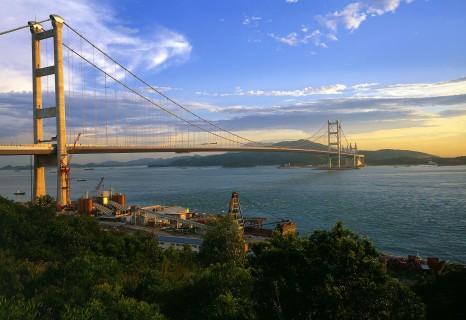
In fact, it was that dire trip which had convinced me to break future flights with a stopover, not always possible but on this occasion convenient enough to schedule into our plans. We chose Hong Kong, and – after an exchange of e-mails with the Hong Kong Tourism Board’s extremely professional and accommodating office in Europe – were offered an official guide to help us fit in as much sight-seeing as possible in the limited time available (appropriately, considering we were travelling on to Australia, his name was Bruce Wong – but more of that later).
Having left London just before midnight, we arrived in Hong Kong mid-afternoon the next day and, while searching for the taxi rank, were approached by a young man offering his “transportation services”. It probably would have been wise to politely decline the offer, but the fee he quoted was similar to what we expected to pay for an “official” taxi, he waved to a colleague explaining he would be back in an hour (at least that’s more or less what he seemed to say) and we were led to a quite grand seven-seater and introduced to his “business partner”.
My companion did wonder aloud (just loud enough for me to hear, thankfully) if we might end up on an operating table with our organs carefully placed in metal bowls but was quickly assured that this was Hong Kong – not the backwoods of Changtang or some other remote Chinese province – and that, in any event, she had probably been watching too many horror films based on dubious urban legends.
Anyway, Billy and Dicky brought us safely to the front door of the Regal Kowloon hotel, and the amiable reception staff soon had us booked in. In fact, perhaps a little too amiable, because It didn’t take much convincing for us to fork out an additional $HK600 (about €60) to be upgraded to “Regal Club” − $HK1,600 in all, including a late check-out.
This included an excellent range of special services and amenities (complimentary breakfast, airport shuttle service, Internet access, fitness room and conference room facilities as well as restaurant discounts), and they also kindly upgraded us to one of the top-floor suites. This earned quite a few Brownie points with my companion, though not enough to avoid another plaintive plea about travelling business class when we resumed our journey the next day.
Once we had settled into our ritzy new surroundings and were fully refreshed (nice touch… the complimentary mini-bar and free welcome drinks in the exclusive Regal Lounge) we made a mini-exploration of the nearby area and, still slightly disorientated from the journey and spying a quaint little dining establishment full of Chinese, decided to join them.
I suspect they hadn’t received too many English-speaking clients there in recent times (though the city is officially bilingual), so ordering dinner basically consisted of pointing to the dishes being consumed on the next table and nodding (fortunately, “beer” was in their vocabulary). After what we later learned was a rather comical false start, drinking from two glasses of “water” they placed on the table (they were for cleaning your chopsticks in between dishes) we enjoyed a thoroughly appetising meal – albeit, four huge bowls of soup! The next day Bruce revealed we had stumbled on a popular Chinese fast food outlet, but it certainly beat hamburgers and fries.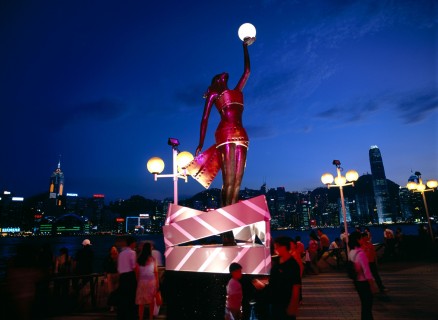
We then retired early in preparation for the next day’s tour – but first a brief history lesson.
The city was just a “barren rock” comprising settlements of fishing villages when the British claimed it in 1842 following the First Opium War with China. Hong Kong Island was ceded to the British under the Treaty of Nanking, the Kowloon Peninsula and Stonecutters Island were handed over in 1860, and a 99-year lease was granted for the New Territories in 1898.
Hong Kong was returned to Chinese sovereignty in 1997, and now operates as a Special Administrative Region of the People’s Republic of China, in accordance with a “one country, two systems” principle. Today, it extends over 1,100 square kilometres, with 260 outlying islands and 6.9 million people. Cantonese is the main language, though many also speak Mandarin – the official language in China (both languages have the same written script).
But back to our stopover… Bruce met us at 9 am in the hotel lobby. A fit (as we soon found out), charming and knowledgeable young man, he – like many Hong Kong children of his generation – studied overseas (the US) before returning home. As well as working as a tour guide, he also teaches martial arts – staying in top condition by climbing the 30 floors to his apartment.
So it was that we headed off at a brisk pace, making our way through the labyrinth of spotlessly clean underground walkways – and metro tunnels – beneath the city streets, a welcome refuge from tropical squalls and the piercing sun. This was late July and, after taking a ferry across to Hong Kong Island and climbing aboard an open-top bus en route to the tram terminal for our journey up to the Peak Tower, it quickly became obvious that failing to pack a hat (it was going to be winter in Australia) had been a serious oversight, soon rectified in the first souvenir shop we came across, a fetching little number featuring a large shrimp – the same colour as yours truly’s bald pate and neck.
Once a simple lookout but now a sprawling, yet tastefully developed, commercial centre, the Peak Tower offers stunning 360-degree views over the island and Kowloon – and is also home to the first Madame Tussauds in Asia.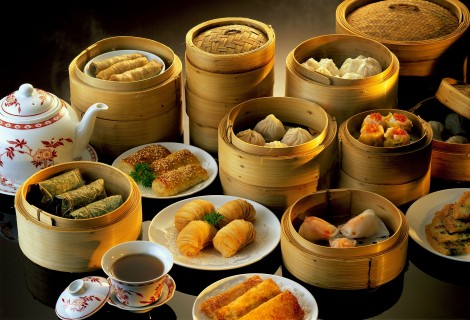
From there it was back down the mountain and another brisk walk through the central business district to the island’s popular Lang Kwai Fong warren of bars and eateries. After a pit-stop for water (no time to loiter on a bar stool) Bruce led us off – briskly – to Hollywood Road, through a plethora of shops and stalls selling handicrafts and antiques; the Man Mo Temple with its intriguing hanging incense sticks (according to Bruce, “hong” means incense, so Hong Kong translates as “fragrant harbour”); and the Sheung Wan district and its fascinating array of dried seafood and tonic foods. I could have lingered there for hours, taking in the exotic aromas and weird and wonderful food items but lunchtime was nearing and we still had another lengthy (and brisk) walk ahead of us back to the trendy and upmarket international restaurant area of SoHo, where Hong Kong Tourism had arranged lunch for us at the Yun Fu basement restaurant in Wyndham Street (part of the Aqua Restaurant Group).
Presumably still mulling over her narrow escape from organ surgery, my companion again wondered aloud whether we could expect some canine or feline delicacy. Unfortunately this time her query was within hearing distance of Bruce, who smiled and gently explained that eating dog or cat was banned in Hong Kong, though dog was still traditionally on the menu in some areas of the republic (apparently, it is four times as tasty as beef).
So, once again urban legend was trumped by contemporary reality – Yun Fu’s cuisine is “a culinary journey of Chinese ethnic minorities, with a strong Tibetan influence” – and we enjoyed a superb lunch of dim sum (meaning “touch the heart”), noodles and rice dishes, accompanied by copious amounts of “red” tea (considered by the Chinese to provide even more health benefits than green tea, as the leaves are left to dry longer), with a couple of glasses of excellent Chinese beer sneaked in while Bruce wasn’t watching.
After lunch, it was another walk (yes, still brisk) to the taxi stand and a pleasant drive through the exclusive Deepwater Bay area to the bustling Stanley Market on the south side of the island, before returning to the hotel via a record store (adding another treasured addition to the “ethnic” rack in my CD collection – Bruce’s recommendation of rock/pop band Beyond was spot-on), hasty showers and a mad rush to pack and catch the shuttle bus.
And the verdict? As Bruce pointed out, Hong Kong may give the impression of being a fairly congested metropolis, but the reality is it has more green areas than most major cities and, with a wonderful oriental charm mixed with a surprisingly placid western ambience (apart from the traffic) – not to mention 15,000 restaurants, a seemingly safe environment and an obvious ardour for cleanliness – it is well worth a longer visit. This time, however, 24 hours was the perfect stopover on our long journey across the world.
FACT FILE

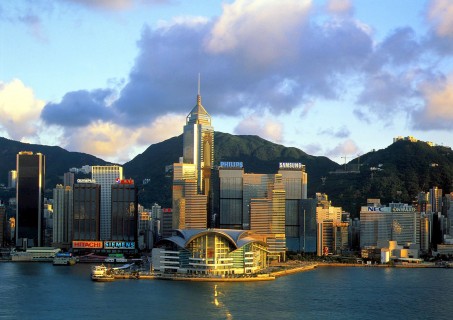
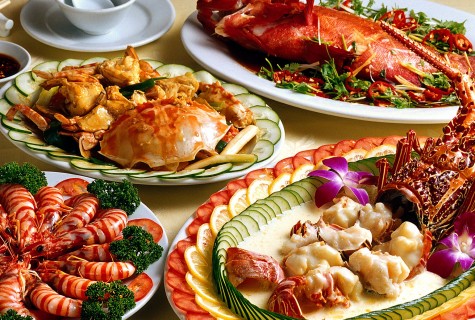
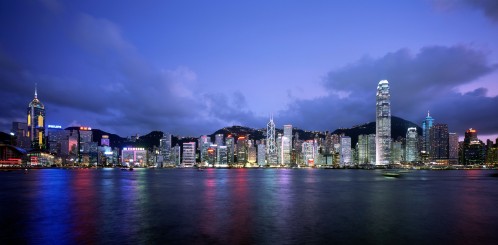
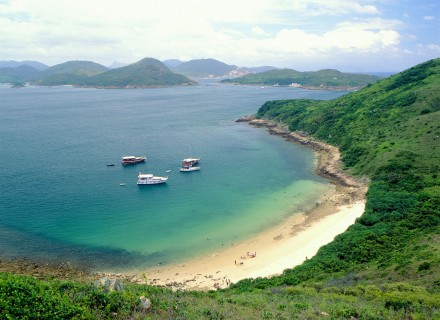
No comments yet